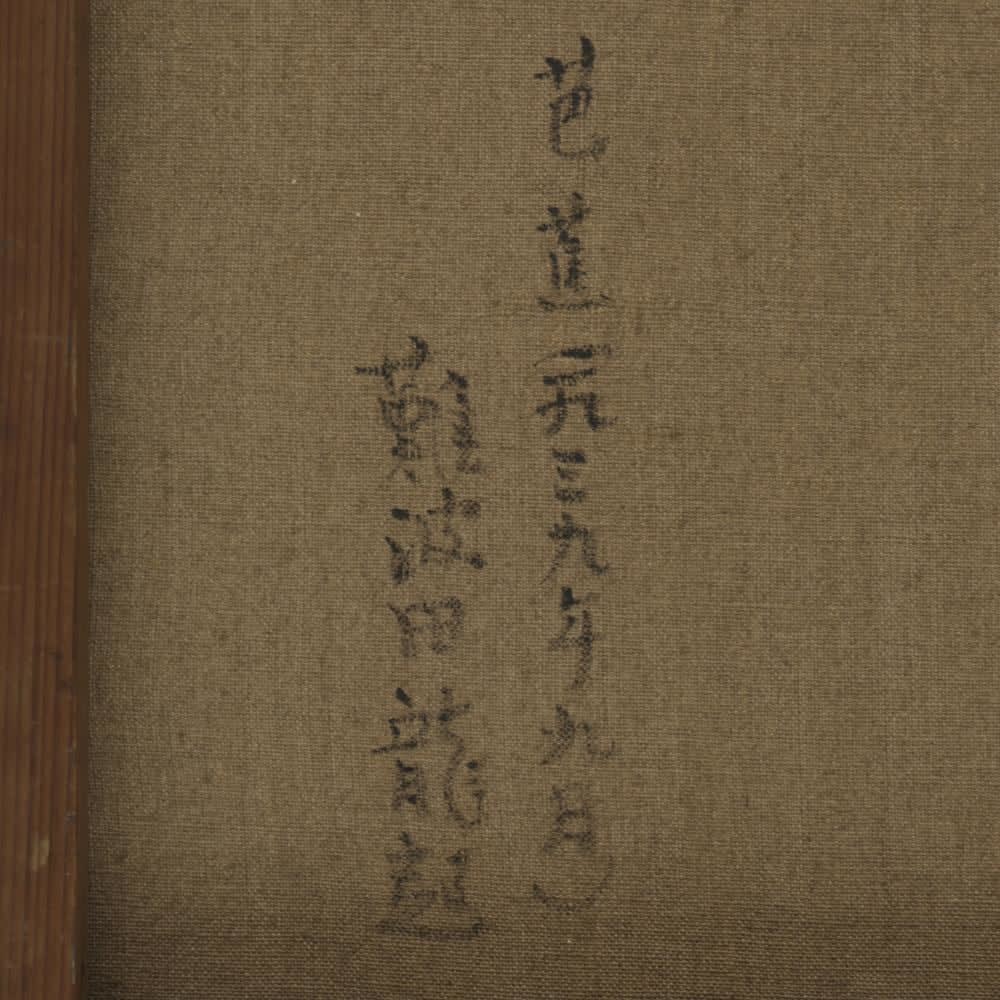Nambata Tatsuoki (1905–1997)
Japanese Banana Leaves
Oil on canvas, framed (10F)
Signed by the artist on the back
1939
53 x 45.5 cm
54.5 x 47 cm (overall)
Further images
Best known for his poetic abstraction expression, Nambata Tatsuoki nonetheless did not start experimenting with abstraction until the postwar time. Nambata studied dessin and oil painting under Takamura Kotaro and Kawashima Riichiro as well as at Taiheiyo Art Association. By the time he joint the founding of Jiyubijutsuka kyokai led by Hasegawa Saburo, Nambata rather displayed a resistance towards abstraction. Instead of merely embracing the abstraction language, or copying the looking of the subject, he sought to “pursue a realism career that [he himself is] clear about.” During this period, Nambata executed mainly still lifes, landscapes and works of the subject of the ancient Greece, a world that he had been longing for. The present work, painted in 1939, belongs to such a period of his career.
Taught to “get hold of the tones” by Takamura Kotaro, his first mentor, in his early career, Nambata once stated: “I spare no effort in doing so.” Such is demonstrated in the present work: the light and shade of the Japanese banana leaf is exquisitely treated with variation of different tones of dark green. In this way, even the depiction of only one leaf of a single green color evokes profound, poetic emotions. Needless to say, such sincere approach and subtle sensitiveness are closely connected to his future accomplishment of abstraction expressions.
Nambata Tatsuoki (yoga painter; 1905–1997)
Hokkaido-born yoga painter. Quitted his studies at Waseda University, and learned painting at Taiheiyo Art Association. Joined Kin’yo-kai led by Kawashima Riichiro through Takamura Kotaro’s introduction. His work, Kodachi, was exhibited at the fourth Kokuga-ten. After withdrawal from Kokuga sosaku kyokai (Association for the Creation of National Painting), he was involved in the founding of Abangyarudo geijutsuka kyokai and Jiyu bijutsuka kyokai. Continued his abstract expressions after the war, and had his retrospective show at the National Museum of Modern Art, Tokyo in 1987. Received the Mainichi geijutsu-sho award. Published books Chusho (abstraction) and So, an illustrated collection of poems.
Taught to “get hold of the tones” by Takamura Kotaro, his first mentor, in his early career, Nambata once stated: “I spare no effort in doing so.” Such is demonstrated in the present work: the light and shade of the Japanese banana leaf is exquisitely treated with variation of different tones of dark green. In this way, even the depiction of only one leaf of a single green color evokes profound, poetic emotions. Needless to say, such sincere approach and subtle sensitiveness are closely connected to his future accomplishment of abstraction expressions.
Nambata Tatsuoki (yoga painter; 1905–1997)
Hokkaido-born yoga painter. Quitted his studies at Waseda University, and learned painting at Taiheiyo Art Association. Joined Kin’yo-kai led by Kawashima Riichiro through Takamura Kotaro’s introduction. His work, Kodachi, was exhibited at the fourth Kokuga-ten. After withdrawal from Kokuga sosaku kyokai (Association for the Creation of National Painting), he was involved in the founding of Abangyarudo geijutsuka kyokai and Jiyu bijutsuka kyokai. Continued his abstract expressions after the war, and had his retrospective show at the National Museum of Modern Art, Tokyo in 1987. Received the Mainichi geijutsu-sho award. Published books Chusho (abstraction) and So, an illustrated collection of poems.





